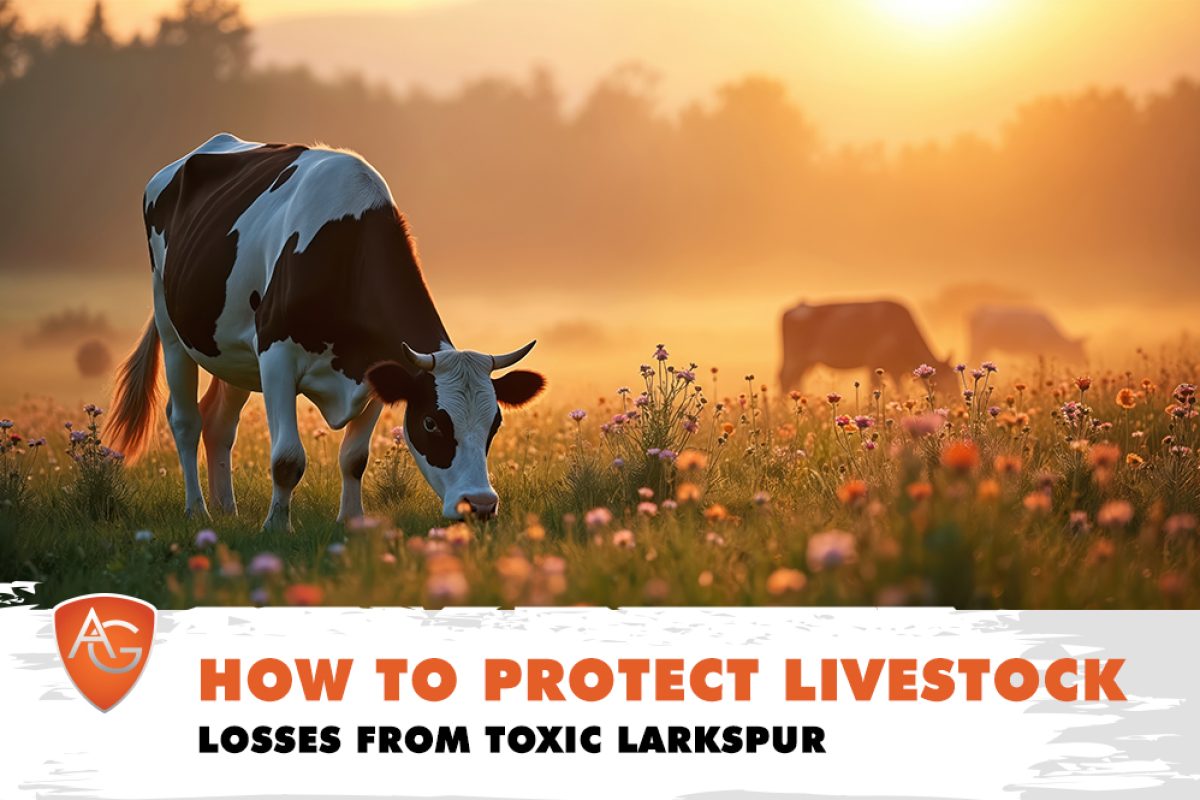Overview: Larkspur poisoning can cause sudden cattle losses in Laramie County. Learn how to protect your herd with smart grazing and early pasture scouting. Read on!
In the foothills and rangelands of Laramie County, spring and early summer bring more than just green grass — they also bring Larkspur, one of the most toxic plants to cattle in our region. Every year, ranchers across Wyoming report avoidable livestock losses because this plant shows up early, spreads fast, and doesn’t always look dangerous.
Knowing how Larkspur works — and how to respond — can mean the difference between a healthy herd and an unexpected loss.
Why Larkspur Is Dangerous to Cattle
Larkspur contains toxic alkaloids that interfere with nerve and muscle function. Cattle are particularly vulnerable, especially when they consume the plant during early growth stages. The risk is highest in late spring when forage is still limited and Larkspur is more palatable.
Common symptoms of Larkspur poisoning include:
-
Muscle weakness
-
Staggering or inability to rise
-
Respiratory paralysis
-
Sudden death, especially in otherwise healthy cattle
Losses often occur within hours of ingestion, with little warning.
Here’s a quick guide on >> Fact Sheet: Poisonous Plants for Cattle that might interest you!
Where It Grows
In our region, Larkspur tends to thrive in:
-
Moist soils at mid-to-high elevations — especially in the Laramie Range foothills and west of Cheyenne
-
North- or east-facing slopes — including areas near Vedauwoo and along Happy Jack Road
-
Lightly grazed or rested pastures — often found on rangeland near Wellington and northern Albany County
These areas offer ideal conditions for early Larkspur growth, especially after wet springs. If your pasture borders timberline foothills or mountain runoff areas, it’s worth scouting closely.
Steps to Prevent Livestock Losses
You can’t always eliminate Larkspur, but you can manage your grazing and treatment strategy to protect your herd.
Scout Before Turnout : Walk your pasture in early spring. Identify patches of Larkspur and flag or mark them so you can monitor plant maturity and plan grazing accordingly.
Delay Grazing When Necessary : Avoid grazing high-risk areas when Larkspur is young and most toxic. If possible, wait until the plant has matured and toxicity levels have declined — or choose alternate pastures.
Use Controlled Grazing Practices : Rotational or targeted grazing can limit the exposure cattle have to known danger zones. It also helps preserve healthy forage that cattle will prefer over weeds.
Know Your Stock : Older cows tend to be more cautious grazers. Yearlings and hungry cattle are more likely to ingest Larkspur. Adjust turnout based on stock class and condition.
Consider Spot Treatment : In areas where Larkspur keeps returning, localized herbicide treatment might be worth considering — especially if the patch is in a high-traffic grazing corridor.
Work With the Land You Know
Larkspur isn’t new — but each year brings a different growing season, and even one overlooked patch can lead to loss. As a local rancher or landowner, you know your ground better than anyone else. The goal isn’t to panic — it’s to stay alert and make sure your livestock gets the safest forage possible.
In Summary
Toxic plants like Larkspur are part of the landscape in the high plains and foothills, but losses don’t have to be. With careful scouting, strategic grazing, and good pasture management, you can stay a step ahead — and keep your herd safe through spring and summer.
All Around Ag is here as your local partner in pasture health — from spotting risks early to supporting long-term forage quality.
